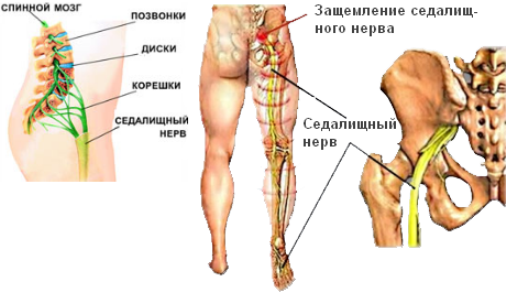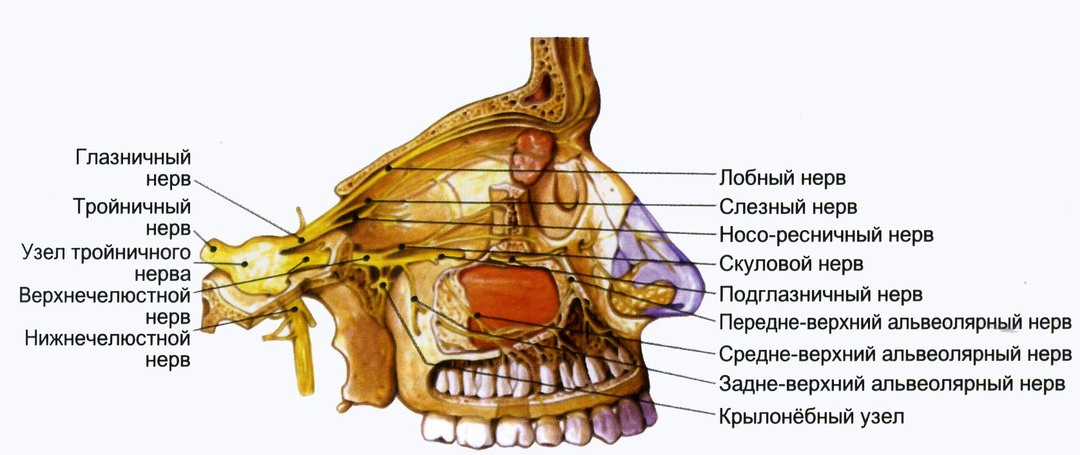Multiple Sclerosis: Symptoms and Treatment

Multiple sclerosis is a chronic neurological disease that is based on the demyelination of nerve fibers.This disease is common among people quite often, however, its prevalence over the globe is not uniform.Thus, the highest incidence rate is registered in the USA, Canada, Europe, and the lowest in Africa and Asia.It is believed that representatives of the European race are most at risk of developing the disease.The disease occurs at the age of 16-40 years, the peak incidence falls on thirty years.In the structure of morbidity women predominate.
Often people call forgetfulness, absent-mindedness, especially in the elderly "senile sclerosis".But these phenomena actually have nothing to do with a disease called "multiple sclerosis."This is a serious illness that often leads to disability.
Contents: Causes of the disease development Symptoms of multiple sclerosis Diagnosis of multiple sclerosis Treatment of multiple sclerosisCauses of the disease

The basic unit of the nervous system is the neuron, which consists of the core, body and its processes( dendrites and axon).Dendrites are small, branched processes.Axon is a long process, with the help of which the nerve impulse is transmitted from the neuron itself to the executive organ.Axon, in contrast to dendrites, is covered with myelin sheath.The integrity of the myelin sheath will determine the quality of the nerve impulse.With multiple sclerosis, this shell is damaged, as a result of which the affected nerve is not able to perform its function fully.
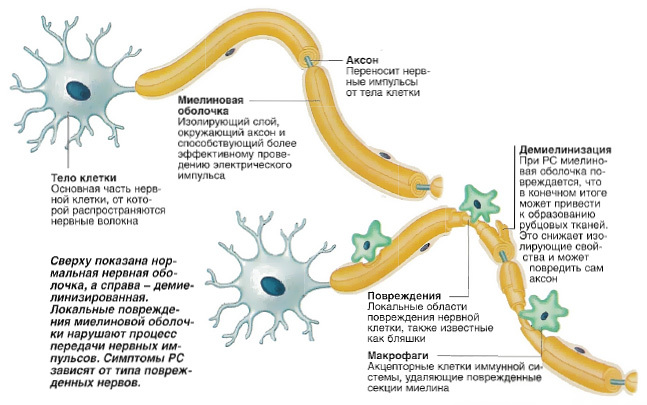
Why does this happen?Multiple sclerosis is classified as a group of autoimmune diseases.That is, the immune system perceives certain cells of the body to be foreign( like malignant cells, viruses, bacteria) and begins to fight them.So, with multiple sclerosis, T-lymphocytes pass through the blood-brain barrier into the brain, where the myelin protein is attacked.
As a result of myelin destruction( demyelination), sclerotic plaques appear on the surface of the nerve fiber.There are plaques in white matter in absolutely any part of the brain or spinal cord, but much more often in the periventricular space of the cerebral hemispheres, trunk, cerebellum, optic nerve intersection, somewhat less often in the subcortical structures and hypothalamus.The patient can simultaneously have plaques that are at different stages of their development.Thus, during the recurrence of the disease, demyelination processes increase, new plaques are formed.
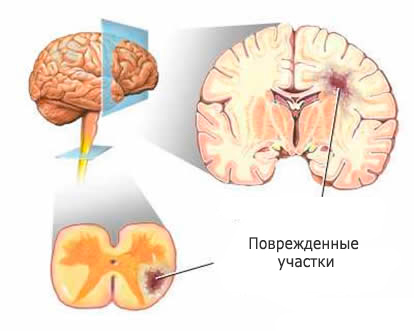
The cause of multiple sclerosis is still unclear.It is believed that the prerequisite for the formation of the disease are the features of a set of genes that control the immune response.Even this factor is imposed by all sorts of external causes, which ultimately leads to the development of the disease. To external factors that provoke the development of the disease, include:
- Accommodation in a specific climatic zone;
- Effects of viruses and bacteria;
- Stress;
- Intoxication with gasoline, heavy metals, organic solvents;
- Features of nutrition: the predominance of animal fats, the lack of plant products.
- Brain Injury;
- Operative interventions performed under general anesthesia.
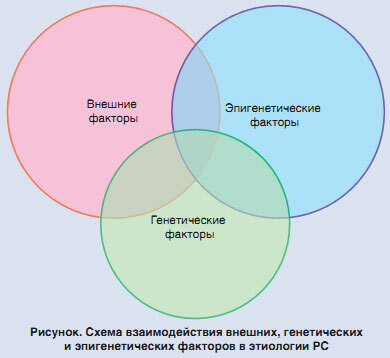
Symptoms of multiple sclerosis
The disease very often manifests as a retrobulbar neuritis.In this case, the patient is worried about deterioration of visual acuity, blurred vision, sensation of blurred vision, and partial or total blindness.With such symptoms, a person often turns to an ophthalmologist.
It is noteworthy that disturbing symptoms at some point in themselves are disappearing.
 In addition, the first signs of the disease can be all kinds of discomfort in the face or limbs in the form of numbness, tingling.Paresthesias are accompanied by a violation of deep sensitivity: joint-muscular and vibrational.However, patients rarely pay attention to such symptoms and do not go to a specialist, because of which the diagnosis is already determined not at the early stages of the disease.
In addition, the first signs of the disease can be all kinds of discomfort in the face or limbs in the form of numbness, tingling.Paresthesias are accompanied by a violation of deep sensitivity: joint-muscular and vibrational.However, patients rarely pay attention to such symptoms and do not go to a specialist, because of which the diagnosis is already determined not at the early stages of the disease.
Symptoms of multiple sclerosis are manifold and are due, first of all, to the area of the brain in which sclerotic plaques were formed. Multiple sclerosis can be signaled by the following symptoms:
- Oculomotor disorders( strabismus, double vision, vertical nystagmus);
- Neuritis of the facial nerve( manifested by peripheral paresis of facial muscles);
- Dizziness;
- Pyramidal disorders( paresis of limbs, increased tendon reflexes, appearance of pathological reflexes);
- Cerebrospinal disturbances( staggering during walking, ataxia, intentional tremor( jitter with targeted movements), horizontal nystagmus, chanted speech, handwriting change);
- Sensitivity disorders( numbness, tingling of the skin);
- Violation of the functions of the pelvic organs( violation of urination, less often defecation);
- Neurotic disorders( rapid fatigue, emotional lability, depressive states, euphoria, apathy, intellectual disorders);
- Epileptic seizures.
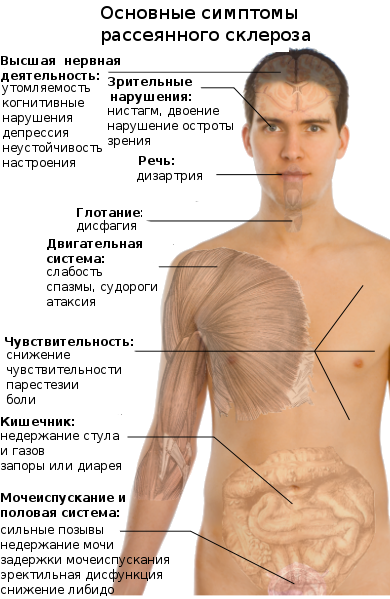
With multiple sclerosis, there is a symptom complex, which in medicine was called the "hot bath" syndrome.When the bath is taken, the patient's condition worsens.The emergence of this syndrome is due to the increased sensitivity of the nerve fiber lacking myelin to the effects of environmental factors.Also, the syndrome of "inconstancy of clinical symptoms" is singled out, when the severity of symptoms changes not only during months, but even during the day.
The syndrome of "clinical dissociation" is characterized by the inconsistency of the symptoms with the results of a neurological examination.For example, in the presence of acute vision loss and even complete blindness, a normal, unchanged eye fundus can be observed.
In most cases, the symptoms of lesions of both the brain and spinal cord are observed in patients.This clinical picture was called the cerebrospinal form of multiple sclerosis.If the patient has signs of spinal cord lesions, talk about the spinal form of the disease, and signs of cerebellar injury, brain pillars, optic nerves - about the cerebral form.
Approximately 90% of patients have an undulating course of the disease.This means that the periods of exacerbation are replaced by remissions.However, after seven to ten years of illness, secondary progression develops when the condition begins to deteriorate.In 5-10% of cases, the disease is characterized by a primarily progressive course.
Diagnostics
Instrumental research methods allow detecting foci of demyelination in the white matter of the brain.The most optimal is the method of MRI of the brain and spinal cord, with which you can determine the location and size of sclerotic foci, as well as their variation with time.
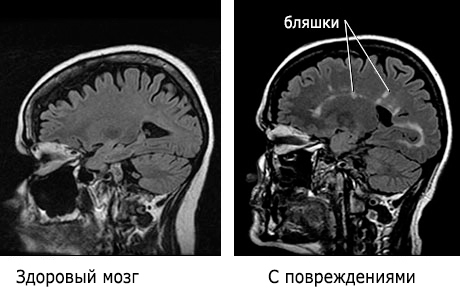
In addition, patients undergo MRI of the brain with the introduction of a contrast substance based on gadolinium.This method allows us to verify the degree of maturity of sclerotic foci: active accumulation of the substance occurs in fresh foci.MRI of the brain with contrasting allows to establish the degree of activity of the pathological process.
For the diagnosis of multiple sclerosis, a blood test is performed for the presence of increased titer of antibodies to neurospecific proteins, in particular myelin.
Approximately 90% of people with multiple sclerosis in the study of cerebrospinal fluid detect oligoclonal immunoglobulins.But we must not forget that the appearance of these markers is also observed in other diseases of the nervous system.
Treatment of multiple sclerosis
Etiotropic treatment for multiple sclerosis is still not developed.Therefore, the main direction in the fight against the disease is pathogenetic therapy.There are two directions of pathogenetic therapy: treatment of exacerbation of the disease and inhibition of the progression of multiple sclerosis.Therapeutic tactics should be developed taking into account the features of the clinical course, the activity of the pathological process.
In case of an exacerbation of the disease, patients are prescribed glucocorticosteroids.First, pulse-therapy with methylprednisolone is carried out - intravenously drip 500-1000 mg of the drug per day per 400 ml of saline.After reaching a positive result, usually it happens on the fifth to seventh days, go to the reception of tableted corticosteroids, in particular, prednisolone.
To suppress the activity of the immune system, drugs from the group of cytostatics are used: cyclophosphamide, cyclosporine, azathioprine.Taking these medications reduces the severity of exacerbations, and also slows the progression of the disease.
A new direction in the therapy of the disease is the use of beta interferon preparations: a rebuff, a betaferon.These drugs have anti-inflammatory, immunomodulating, and antiviral actions.Beta-interferons are prescribed for 6-12 million IU every other day through a continuous continuous course.Also in the therapy of multiple sclerosis are used modern drugs such as: Copaxone( glatiramer acetate), cytostatic Mitoxantrone, as well as the preparation of monoclonal antibodies Natalizumab( Tizabry).
These drugs reduce the number and severity of exacerbations, prolong the period of remission, slow the progression of the pathological process.
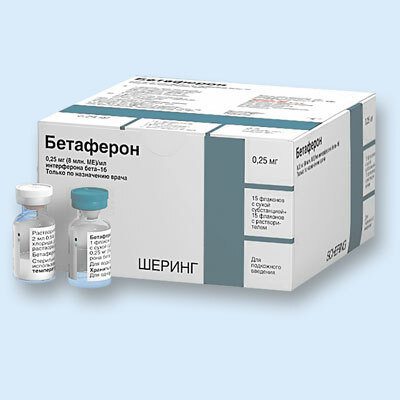
Symptomatic treatment is used to relieve specific symptoms of the disease. The following preparations can be used:
- Midokalm, sirdalud - reduce muscle tone with central paresis;
- Proserin, galantamine - in the case of urination disorder;
- Sibazon, phenazepam - reduce tremor, as well as neurotic symptoms;
- Fluoxetine, paroxetine - in depressive disorders;
- Finlepsin, antelepsin - used to eliminate seizures;
- Cerebrolysin, nootropil, glycine, B vitamins, glutamic acid - are used by courses to improve the functioning of the nervous system.
Grigorova Valeria, medical reviewer

